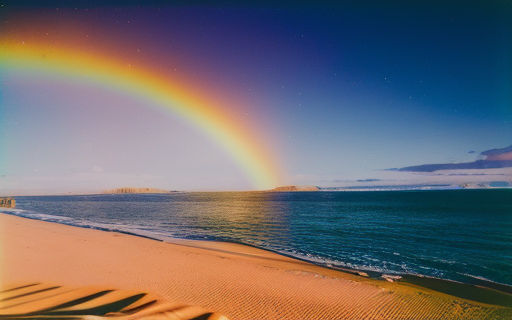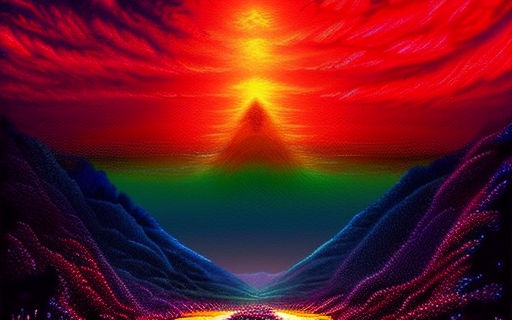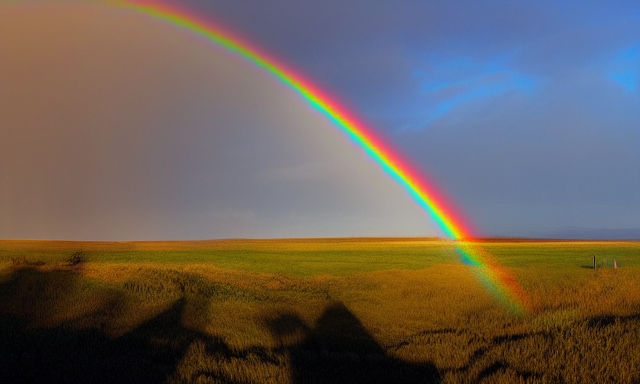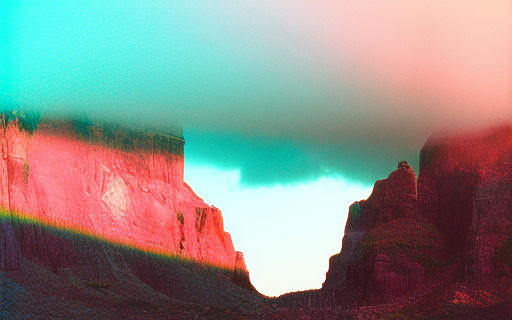What’s the Difference Between a Sundog and a Halo?
First, let’s understand what a sundog and a halo are. These phenomena are created by ice crystals that bend light in a particular direction. This is also known as refraction of light. Haloes and sundogs are cousins of moondogs.
When you buy through links on our site, we may earn an affiliate commission. As an Amazon Associate I earn from qualifying purchases.

ice crystals
Haloes and sundogs are atmospheric phenomena caused by ice crystals in our atmosphere. These structures are a result of light being refracted or reflected by these crystals. The size, shape, and distance of the ice crystals are determined by their location in our atmosphere. Haloes and sundogs are often seen in the morning and evening hours and are often associated with thin high-level clouds.
A sundog is a bright spot in the sky that appears around 22 degrees to the left or right of the sun. This phenomenon is caused by the amount of wobbling ice crystals in the clouds, the amount of sunlight hitting the sun’s surface, and the height of the sun over the horizon.
Both haloes and sundogs are formed by plate crystals. These crystals are found all over the world, and can even be found at the ground level. They tend to have large hexagonal faces and drift downwards. This allows rays to enter the crystal, but it causes light to leave through a side face that is inclined 60 degrees. The result is a deviated ray of light, with the maximum deviation occurring at 22 degrees.
Sundogs are also a phenomenon of light refraction. Sundogs form near the horizon and are most common during chilly mornings. They will eventually follow the real sun up into the sky, but they appear at different angles. This phenomenon is closely related to a sun halo, which is a ring of light surrounding the sun.
refraction of light through ice crystals
Refraction of light through ice crystals is a natural phenomenon that produces beautiful optical effects. When sunlight passes through a cloud or ice crystal, it is broken into its component colors. Light with the longest wavelength, such as red, is refracted the least, while the shortest wavelength, violet, is refracted the most.
The refraction of light in ice crystals occurs when a thin section of the atmosphere is covered with a large concentration of ice crystals. This makes the rays of light appear to bend and become concentrated at specific angles. The smallest deviation angle is found at the lowest angle, causing the maximum amount of rays to concentrate on a small area. Some rays, however, pass undeflected through opposite faces of the prism. This phenomenon occurs only at certain angles of the horizon and is not associated with rain.
The refraction of light through ice crystals causes an array of visible atmospheric phenomena, including sundogs, halos, and light pillars. These are the result of ice crystals reflecting sunlight from the earth’s surface. This enables the creation of a halo, a ring of light centered on the sun.
There are two basic types of ice crystals. One is column-shaped, and the other is plate-shaped. Both types of ice crystals can produce optical effects. Depending on their shape and orientation, the ice crystals can produce halo or sun dog effects.
type of halo
A solar halo is a ring of light around the Sun, and can be seen when the Sun is visible to us. This ring of light is caused by ice crystals in thin cirrostratus clouds, which reflect light from the Sun. When viewed from above, the ring of light is encircled by an entanglement of clouds.
One type of halo is the 22 degree halo, which appears as a ring about 22 degrees from the Sun. The 22 degree halo is created by two refractions of solar rays as they travel through an ice crystal. This bending occurs to varying degrees, depending on the size of the ice crystal. In the case of the 22 degree halo, the crystals have a diameter of less than 20 micrometres.
Another type of halo is the floating halo. This design provides brilliance on two levels, but is more likely to be damaged than the flush halo. For this reason, a low-set ring is recommended for people with active lifestyles. This type of ring may be difficult to maintain, especially for people with children or active jobs.
A halo is also a meteorological sign. In the early days of meteorology, people looked for haloes as a way to predict weather. Haloes were often formed by high cirrus clouds, which contain the ice crystals necessary for formation. These clouds are also indicative of a frontal system approaching. While the front itself may be inactive, it is still possible to observe a corona in these conditions.
ice halo vs sundog
An ice halo or sundog is an optical phenomenon created when ice crystals in the upper atmosphere reflect light. This light is dispersed into different colors based on the crystals’ shapes. This phenomenon occurs in the sun, moon, and earth. The sun halo is made of hexagonal ice crystals that are suspended in cirrus clouds.
A sun dog is another atmospheric phenomenon created by the Sun. This bright spot appears on either side of the Sun and is usually surrounded by a 22 degree halo. These phenomena are often seen during a solar eclipse. Both of these phenomena are very beautiful and can be seen by taking pictures or videos of them.
The difference between an ice halo and a sundog is the size and location of the ice crystals. On Earth, there are significant amounts of ice crystal-carrying clouds that align with the horizon. Other planets, however, have different crystal structures and can produce halos with four or more sundogs.
Sundogs are also known as mock suns, sundogs, and parhelia. They form when the light of the Sun is bent and refracted by hexagonal ice crystals in cirrus clouds. This phenomenon can be seen in all seasons.













